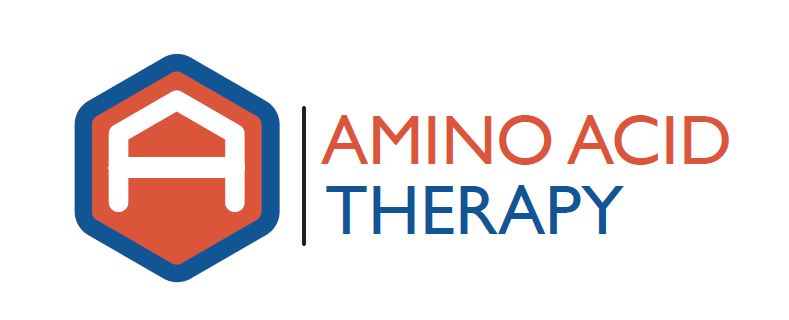The biggest misconception that we run into when using amino acid therapy is how to interpret urinary neurotransmitter results. This post should help clear up some of that confusion.
If using balanced amino acid formulas does not bring a resolution of symptoms related to neurotransmitter imbalance, urinary testing can be performed to help guide dosing recommendations. However, conducting the test under the proper conditions and interpreting the test results are critically important to obtaining clinically useful data to help guide amino acid dosing.
Dosing Requirements
Proper dosing is essential to getting useful information from urinary neurotransmitter testing. Numerous papers and studies have shown that conducting urinary neurotransmitter testing is not accurate and does not provide clinically useful information if no amino acids are being taken and/or if the amino acids are not taken consistently. This is because urinary neurotransmitters exist in one of two states. The “endogenous” state is the normal day-to-day state that occurs when a person is not taking any amino acids. In the endogenous state, urinary neurotransmitter levels will vary (widely) depending upon dietary intake, stress, sleep and a host of other factors and therefore, do not provide useful clinical information.
The “competitive inhibition state” occurs when significant amounts of both serotonin and dopamine amino acid precursors are being taken simultaneously over a period of time. Peer-reviewed research has shown that urinary neurotransmitter testing is only useful when a person is in the competitive inhibition state. Therefore, taking a ‘baseline’ assessment of urinary neurotransmitters without taking any amino acids does not provide any useful data.
For those of you familiar with laboratory testing, it would be similar to running a glucose tolerance test without proper fasting or taking a set amount of glucose. A glucose tolerance test measures your blood sugar response at set times (usually 1, 2, and 4 hours) after consuming a specific amount of pure sugar (usually 75 grams). In order to get accurate information, this test requires that a person fasts for 8-12 hours before testing and consume nothing except the 75 grams of sugar before taking measurements. If you eat food before the test or do not take the exact amount of sugar at the right time, the results would be worthless from a clinical perspective – they would provide you numbers, but the numbers wouldn’t mean anything.
Likewise, simply running a urinary neurotransmitter test without taking a set amount of amino acids at the specified times results in a bunch of numbers on a page that are of no clinical value. The numbers are there, but they don’t mean anything.
In addition, in order for the test to be accurate, you must be taking a set amount of amino acids for at least 7 days before testing without missing or changing any doses. This is because it takes approximately 3-5 days on a consistent dose of amino acids before neurotransmitter levels equilibrate. If a dose is missed or changed, that process starts anew and an additional 7 days is needed before testing can be conducted. We wait 7 days to insure that neurotransmitter levels have stabilized.
What Urinary Neurotransmitter Testing Is Actually Measuring
So now that we know we have to take a set amount of amino acids for a specific period of time before testing, the next question is ‘why’ and ‘what are we really measuring’? Competitive inhibition implies that we are putting a demand on ‘something’ and that ‘something’ has to react to the amino acids we are providing. That ‘something’ are specialized transporters called ‘organic cation transporters (OCT)’. They are like gates that determine the functional status of neurotransmitter levels in the body. The reason we can use urinary testing to help us determine the functional status of these gates in the brain (and other tissues) is that research indicates that the OCT transporters of the kidney, brain, GI tract and liver are “identical and homologous”, which means that they are the same in all the tissues of the body and they respond in the same way when presented with a set amount of amino acids.
So, when a person takes a set amount of amino acids over a sufficient amount of time, those amino acids disperse throughout the body and brain and come to a steady state leading to uniform serotonin and dopamine synthesis. Determination of the renal OCT status is a rare opportunity to look at the function of the serotonin and dopamine transporters throughout the body including the synapses of the brain. Said differently, central nervous system, peripheral and urinary serotonin and dopamine levels are a function of the status of the OCT transporters.
Therefore, what we are really trying to do with amino acid therapy is supply a sufficient amount and balance of amino acid precursors to optimize the function of these OCT transporters throughout the body in order to decrease and eliminate symptoms related to improper function. This is also why amino acid therapy can have such a beneficial affect on so many symptoms and conditions.
Obviously, this isn’t quite as straightforward as it first appears. Therefore, working with a provider trained in the proper use of amino acid therapy is very important to long-term success. To find a provider near you, contact NeuroResearch at www.neurosupport.com.
References
- Hinz M, Stein A, Uncini T. Validity of urinary monoamine assay sales under the “spot baseline urinary neurotransmitter testing marketing model. International Journal of Nephrology and Renovascular Disease. July 2011, Volume 2011:4; 101-113. DOI: http://dx.doi.org/10.2147/IJNRD.S22783
- Hinz M, Stein A, Trachte G, Uncini T. Neurotransmitter testing of the urine: a comprehensive analysis. Open Access Journal of Urology. October 2010, Volume 2010:2; 177-183. DOI: http://dx.doi.org/10.2147/RRU.S13370
- Hinz M, Stein A, Ulcini T. Urinary neurotransmitter testing: considerations of spot baseline norepinephrine and epinephrine. Open Access Journal of Urology. February 2011, Volume 2011:3; 19-24. DOI: http://dx.doi.org/10.2147/RRU.S16637
- Hinz M, Stein A, Uncini T. The dual-gate lumen model of renal monoamine transport. Neuropsychiatr Dis Treat. 2010;6:387–392.
- Hinz M, Stein A, Uncini T. Treatment of attention deficit hyperactivity disorder with monoamine amino acid precursors and organic cation transporter assay interpretation. Neuropsychiatr Dis Treat. 2011;7: 31–38.
- Hinz M, Stein A, Trachte G, Uncini T. Neurotransmitter testing of the urine: a comprehensive analysis. Open Access Journal of Urology, October 2010: 2; 177-183. DOI: 10.2147/OAJU.S13370.
- Ziegler MG, Aung M, Kennedy B. Sources of human urinary epinephrine. Kidney Int. 1997;51:324–327.
- Trachte G, Uncini T, Hinz M. Both stimulatory and inhibitory effects of dietary 5-hydroxytryptophan and tyrosine are found on urinary excretion of serotonin and dopamine in a large human population. Neuropsychiatr Dis Treat. 2009;5:228–235.
- Hinz M. Depression. In: Kohlstadt I, editor. Food and Nutrients in Disease Management. CRC Press; 2009;465–481.


